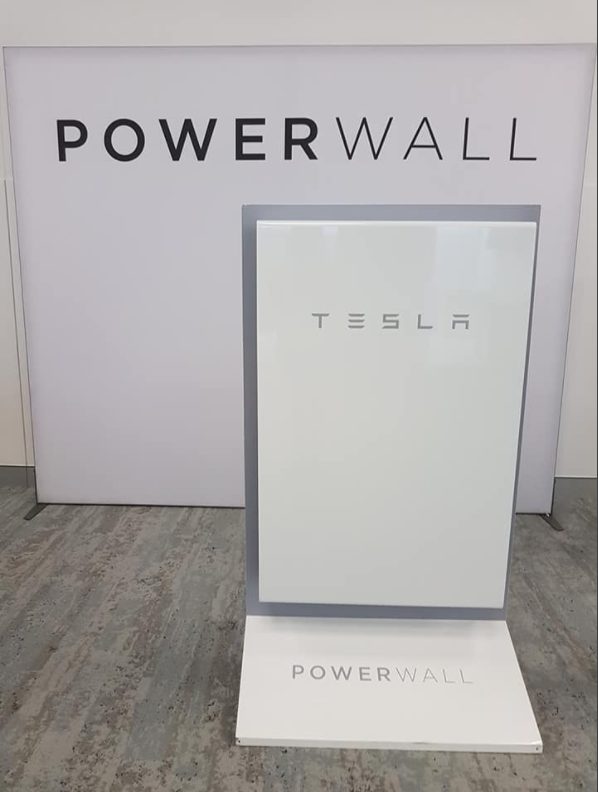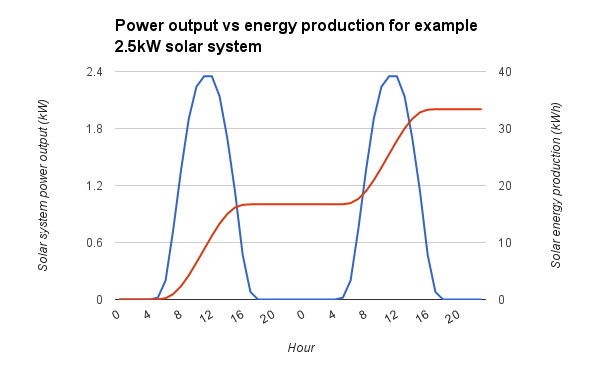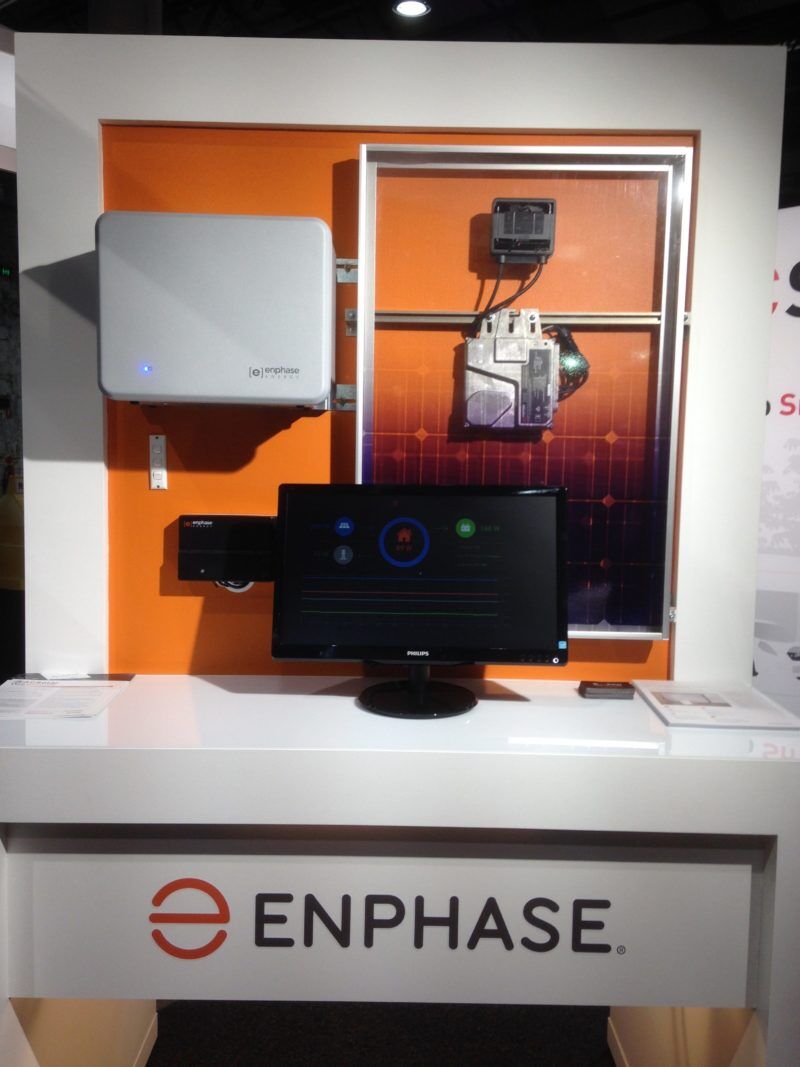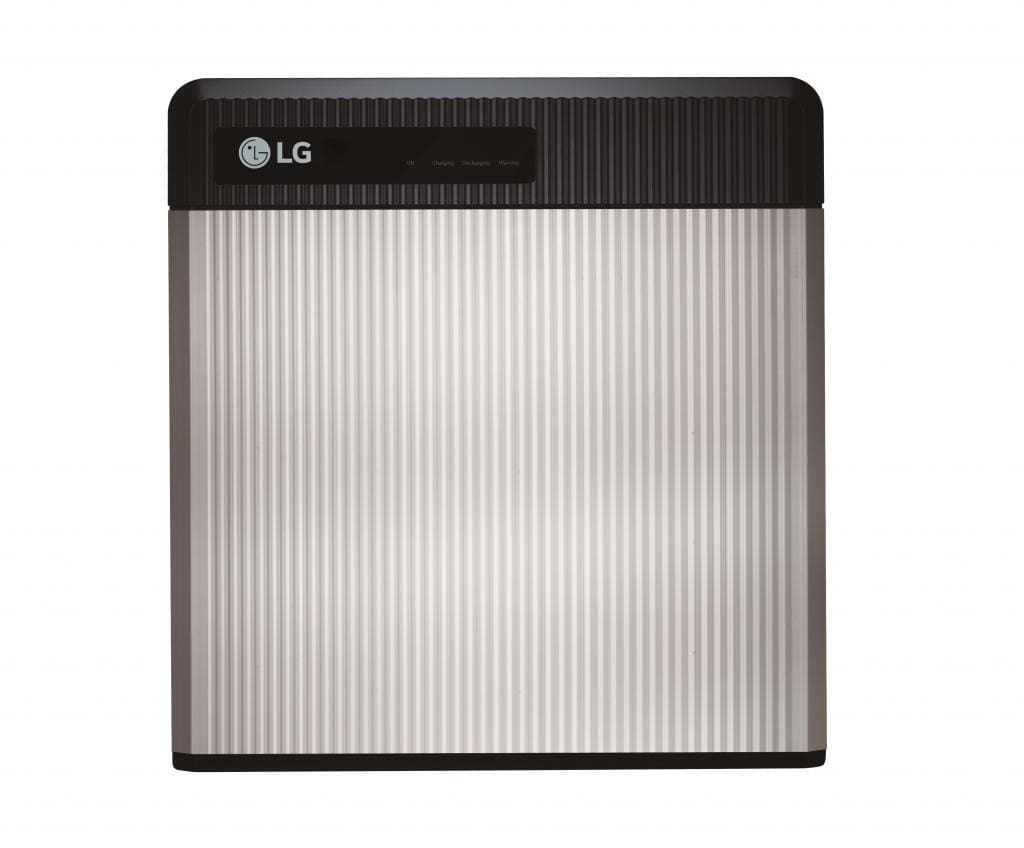If you’re shopping around for solar panels or battery storage for your home, you’re undoubtedly come across the terms ‘kilowatt’ (abbreviated as kW) and kilowatt-hour (kWh). These terms might be a bit confusing at first, so we’ve written this article to explain these terms and make them easy to understand.
Power vs energy (vs capacity)
When it comes to solar & batteries (and electricity in general) people sometimes use the terms power and energy interchangeably, but they’re actually different.
Power (kilowatts, kW)
Power, technically speaking, refers to instantaneous output – the amount of electricity generated (or discharged, in the case of batteries) at a given moment. Basically, power is measured in watts (W), but when we talk about rooftop solar and batteries, it’s usually easier to talk in terms of kilowatts (where 1kW = 1,000W) – just as we usually talk about the weight of produce and meat in kilograms as opposed to grams.
For example, a solar power system may produce 2kW of electrical power in the morning when the sun isn’t yet fully up, but 5kW of power around midday, when the sun is shining its brightest.
Compare quotes from up to 7 installers in your area now.
Energy (kilowatt-hours, kWh)
Energy, on the other hand, is more a measure of the ‘volume’ of electricity – power over time. You’ll usually hear (and see) energy referred to in terms of kilowatt-hour (kWh) units. The place you’ll see this most frequently is on your energy bill – most retailers charge their customers every quarter based (in part) on how many kWh of electricity they’ve consumed. It also applies to solar PV systems, of course – your solar system will generate a certain number of kWh per day. Similarly, the amount of energy that a battery can store is often referred to in terms of kWh.
As a simple example, if a solar system continuously produces 1kW of power for an entire hour, it will have produced 1kWh in total by the end of that hour.
Capacity (kW for solar, kW & kWh for batteries)
Capacity is the measure of a solar system’s potential to generate power (or in the case of batteries, both generate power and store energy).
For solar PV systems
Where things can sometimes get a bit confusing is when you see a solar PV system’s size described in terms of ‘kW’ (which is why it’s also sometimes written as kilowatt-peak, kWp – although not much in Australia). Here, we’re really talking about peak output capacity. When a solar installer refers to a 5kW solar system, for example, they’re actually talking about a system that can produce at most 5kW of instantaneous power – which will happen when the system’s panels are receiving a full dose of sunlight. As mentioned above, however, the system’s actual power output will fluctuate throughout the day depending on how brightly the sun is shining.
Example using a ~2.5kW solar system: Instantaneous power output vs cumulative energy production over a two-day period. Peak power output is just under 2.3kW (due to standard inefficiencies), while the total amount of energy produced over the two days is just over 33kWh.
For battery storage
Battery capacity is measured (and discussed) in both terms of kW of power and kWh of capacity – this is why you’ll hear talk about ‘power batteries’ vs ‘energy batteries’. All batteries have both power and energy capacity ratings.
Telsa’s Powerwall 2, for example, has a continuous output capacity of 5kW (higher rates possible for short periods) and a storage capacity of 13.2kWh (at the beginning of its warrantied life).

Tesla’s Powerwall is a ‘power battery’, able to instantaneously release stored energy at a relatively high rate.
Enphase’s modular AC Batteries, on the other hand, have a continuous power output rating of 0.26kW (260W) each and a storage capacity of about 1.2kWh. AC Batteries can be ‘stacked’ to increase both their storage and output capacities (basically just multiply both figures by the number of units).
Enphase’s AC Battery in action in a demo stand at the Australian Energy Storage Conference & Exhibition 2016.
Meanwhile, LG Chem’s RESU10 has a storage capacity of 8.8kWh with a continuous power output capacity of 3kW).
LG Chem’s RESU10 battery.
Other things to keep in mind when comparing battery capacity
Talking about battery storage capacity can be tricky – especially when it comes to storage capacity, which may degrade over time. Check out our article on why you should always ask for an ‘energy throughput’ figure in addition to a storage capacity (or cycle life) specification.
Compare quotes from up to 7 installers in your area now.
- Solar Panel Costs: Solar Choice Price Index | April 2025 - 1 April, 2025
- Solar Panels For Homes – All You Need to Know About Solar Systems - 18 March, 2025
- Best NSW Solar Feed-In Tariffs - 17 March, 2025



I am planning to buy bmw 330e. but my apartment doesn’t have a garage to plugin the car for overnight charging. however apartment has plenty of open parking space. So i am thinking if pick 3-4 PV panels and connect them to a battery of around 7-8 kwh and an inverter. I should be able to assemble it on a mobile platform to move into the sun in the parking lot. and in night can charge my car from this setup.
Any suggestion and guidance in building such system is much appreciated.
Thanks for the comment, Amit. However, we’re not really specialists in the electric vehicle space. You may want to get in touch with a company that makes charging stations – a google search for ‘solar electric vehicle charging’ should turn up a few results. Best of luck!
Hello, I have the same question as Stuart Jackson, and I didn’t get your explanation. Could you please explain it in another way?
If I have a continuous power output capacity of 3kW in a battery, and 10kWh of energy capacity, it means that after 3,33 hours it wont generate power anymore, until it is charged again?
Hi Gloria,
Your example is roughly correct – as a simple example, if a battery with 10kWh of energy stored inside of it discharges power at a steady 3kW, it will be empty after 3.33 hours. In reality, however, the battery may not be able to reach the full 3kW output as it gets closer and closer to ’empty’, which means it may continue to put out power (at a lower rate) for a bit longer than that.
Hope this helps!
Why do some panels talk about kW-pico?
Hi Edmount,
‘Kilowatts peak’ (or kWp) refers to the maximum possible output of the system. For example, a 5kW solar system actually has a ‘peak’/nameplate output of 5kW, but in reality it may only reach this peak output when the sun is at its highest point during the day – usually between 11 and 2pm or so. kWp is basically a more specific (and accurate) way to refer to a system or a panel’s output rating, but the term kW tends to be thrown around colloquially in its stead.
Hope this helps.
Just looking at the kW / kWh article. If a system has a capacity of 10kWh and a continuous power output capacity of 3kW does this mean the battery will only last 3 hours if using that 3kW of capacity?
Hi Stuart,
Thank you for your comment. With any storage system as long as the pull or draw from the battery does not exceed to output specified by the manufacturer of the battery, it will last. If you think of it like a straw. If more is trying to come out then it is designed for, the extra or overflow will then be pulled from the grid. Here’s an example if you are using appliances in the home the equate to 1khw of energy then yes the battery will last for one hour in real time. If you are using 2khws for appliances in the home, 1kwh will be pulled from your storage, the other from the grid.